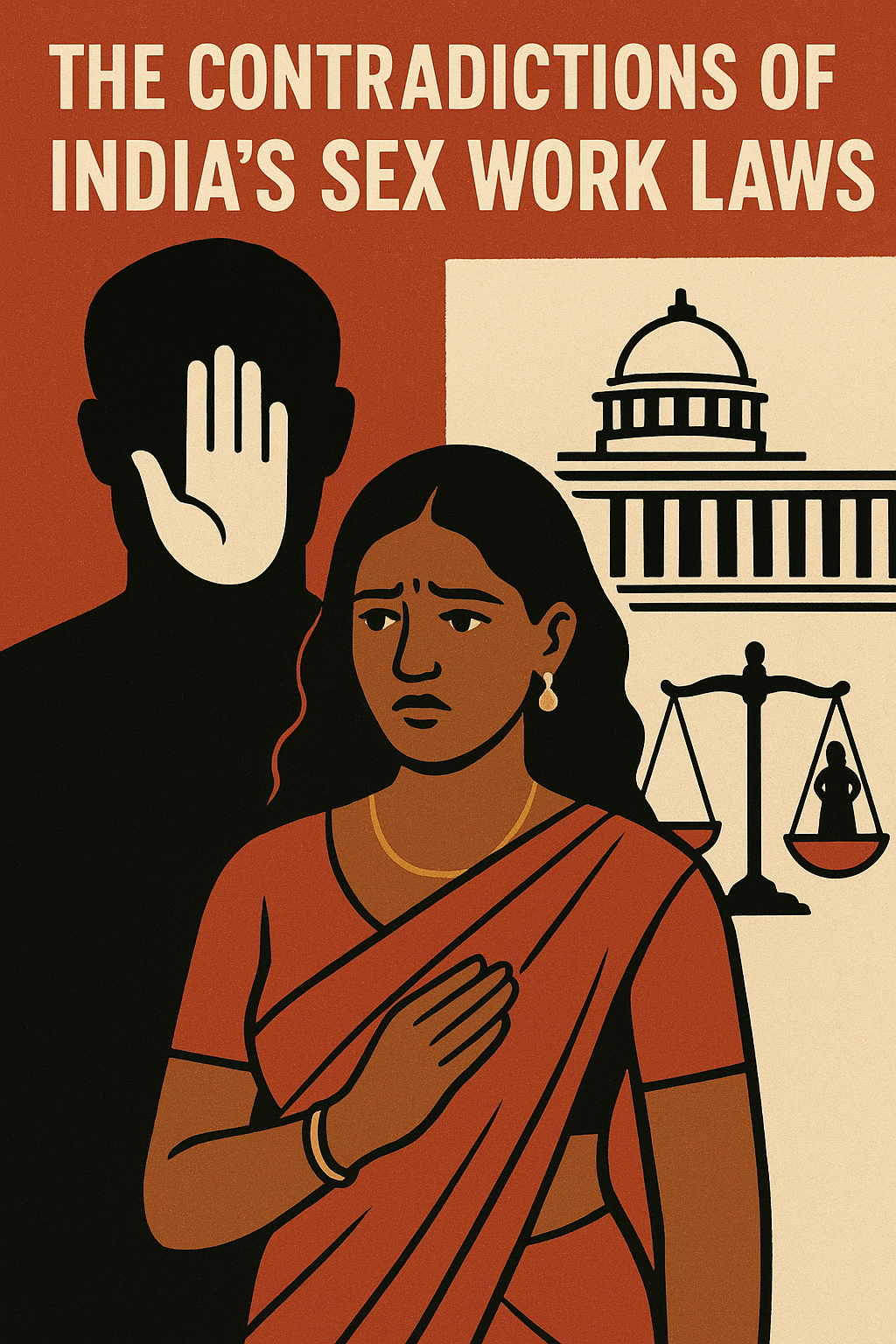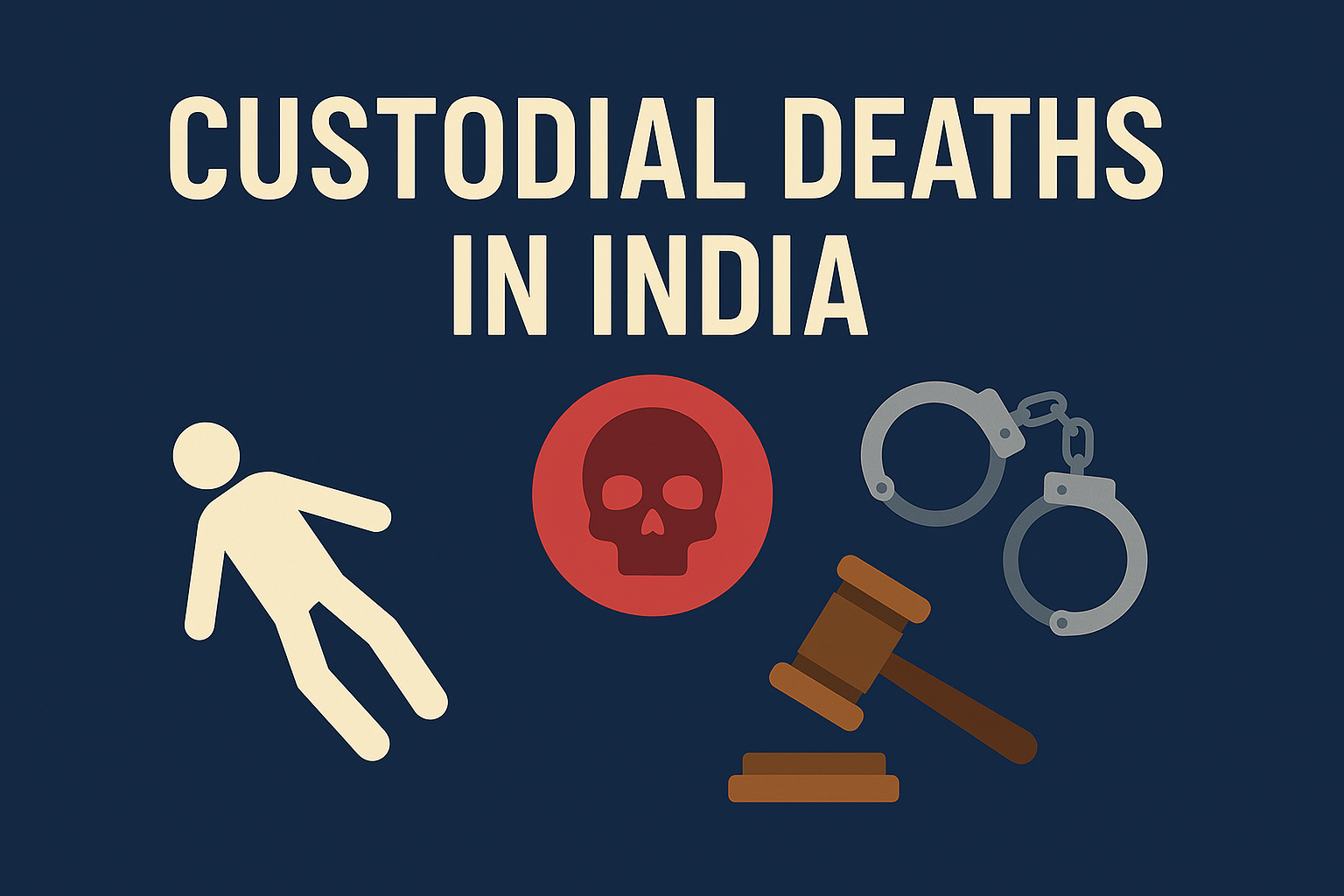



Author: Sakshi Verma
Institution: BALLB, Lords University
Custodial deaths are among the gravest violations of human rights in any democracy. When individuals are placed in the custody of the state, it becomes the state’s legal and moral obligation to ensure their safety and dignity. Unfortunately, India has witnessed a recurring pattern of custodial deaths — often due to torture, negligence, or extrajudicial conduct by police or prison authorities. These deaths strike at the very heart of Article 21 of the Indian Constitution, which guarantees the right to life and personal liberty. This article explores the legal framework, key judgments, real-life cases, and the urgent need for reforms to curb custodial violence in India.
Custodial death refers to the death of an individual while they are in the custody of law enforcement or judicial authorities. It typically occurs when a person is either under arrest, awaiting trial, or serving a sentence in prison. Such deaths are deeply concerning, not only because they raise questions about human rights violations but also because they reflect systemic failures in law enforcement and prison administration.
A custodial death may result from various causes, including:
Police brutality or physical torture during interrogation
Mental or emotional abuse, including threats or humiliation
Failure to provide timely medical treatment
Unsanitary or unsafe detention conditions
Suicide, often driven by physical abuse, psychological pressure, or hopelessness
Illegal detention or the use of third-degree methods
Negligence by authorities, including delays in transferring prisoners to hospitals or ignoring visible signs of distress
Custodial deaths are generally categorized into two types:
These occur when a person dies while in the custody of police authorities — for example, inside a police station or during transportation. In many cases, such deaths are linked to coercive methods used during interrogations. The use of third-degree torture, illegal confinement, and denial of basic rights are commonly reported in these instances. Often, these deaths are sought to be disguised as natural or accidental unless revealed through media or judicial inquiry.
These take place in prisons, jails, or detention centers where the individual is under the supervision of jail authorities, not the police. Deaths in judicial custody may occur due to overcrowding, poor sanitation, malnutrition, denial of medical care, or violence by other inmates. While less publicized than police custody deaths, they too reflect a grave failure of the prison system to protect inmates’ constitutional right to life and dignity.
Though not every custodial death results from deliberate abuse, the absence of proper safeguards, lack of accountability, and a culture of impunity among authorities contribute significantly to the problem. Moreover, many custodial deaths are not reported accurately, or are labelled as suicides without independent investigations.
The issue is not only a legal one but a deeply human rights concern, implicating the fundamental values of justice, transparency, and dignity. The Supreme Court of India and National Human Rights Commission (NHRC) have repeatedly emphasized the state’s obligation to ensure that no individual loses their life due to the misuse of custodial power.
Article 21 – Right to life and personal liberty.
Article 22(1) – Rights of arrested persons (legal representation).
Article 20(3) – Protection against self-incrimination
Indian Penal Code (IPC), Sections 330 & 331 – Punishment for voluntarily causing hurt to extort confession.
Criminal Procedure Code (CrPC), Section 176 – Judicial inquiry in cases of custodial death.
Indian Evidence Act, Section 114-B – Presumption against police if a person dies in custody.
India is a signatory to:
UN Convention Against Torture (UNCAT) – Yet to be ratified.
International Covenant on Civil and Political Rights (ICCPR)
The Supreme Court laid down 11 guidelines for arrest and detention, including:
Informing relatives
Medical check-ups every 48 hours
Right to legal counsel
This judgment has become a cornerstone in protecting detainees.
The Court held that the state is liable to compensate for custodial death under Article 21, even if committed by state agents.
Emphasized the need for justifiable arrests. The Court ruled that arrest should not be routine and must be based on necessity.
Issued guidelines for video-recording of post-mortems, and mandatory judicial inquiry into all custodial deaths.
Digital Evidence in Indian Courts: Admissibility and Challenges
🔹 Sathankulam Case (2020) – Tamil Nadu
Jayaraj and his son Bennix were arrested for allegedly violating COVID curfew. They died in police custody, with severe internal injuries. This case triggered nationwide protests and renewed calls for police accountability.
🔹 Rohit Tiwari Case (2022) – Uttar Pradesh
A 22-year-old died in custody with multiple injury marks. Despite allegations of police torture, the case was dismissed for “lack of evidence.”
🔹 Manoj Kumar Case (2019) – Haryana
Detained for petty theft, Manoj died in custody within 48 hours. Autopsy revealed ruptured organs — a clear sign of custodial torture.
Custodial deaths in India have reached alarming proportions, highlighting deep-rooted issues within the criminal justice system. Despite constitutional protections and Supreme Court guidelines, incidents of torture, abuse, and deaths in custody continue with disturbing frequency.
According to data compiled by the National Human Rights Commission (NHRC) and the National Crime Records Bureau (NCRB):
Over 2,150 custodial deaths were recorded in India between 2017 and 2022, encompassing both police and judicial custody.
In 2021 alone, 88 deaths occurred in police custody, many of which remain unsolved or closed without accountability.
The conviction rate for police officials involved in custodial violence is shockingly low — less than 6%, revealing how rare it is for law enforcement personnel to be held legally responsible.
In more than 75% of reported cases, causes of death included torture, physical beatings, and inhumane treatment during interrogation or detention.
Many victims belonged to marginalized communities, such as Scheduled Castes, Scheduled Tribes, and economically disadvantaged groups, pointing to a pattern of systemic discrimination and abuse of power.
Moreover, experts believe that the actual number of custodial deaths may be significantly higher than reported, as numerous cases are misclassified as suicides or natural deaths, and victims’ families often refrain from reporting due to fear or intimidation. Even when First Information Reports (FIRs) are filed, investigations are often conducted by the same police department accused of wrongdoing, raising serious concerns about impartiality and fairness.
Notably, the lack of CCTV cameras in lockups, failure to conduct independent post-mortems, and delays in judicial inquiries further contribute to a culture of impunity.
International human rights watchdogs, including Amnesty International and Human Rights Watch, have repeatedly criticized India for its failure to prevent custodial torture and death. Despite signing international treaties like the UN Convention Against Torture, India has yet to ratify it, nor has it enacted a dedicated anti-torture law.
These grim statistics and trends reflect more than individual acts of violence — they signal a systemic failure in enforcing accountability, protecting constitutional rights, and ensuring humane treatment for all individuals, regardless of their legal status.
The National Human Rights Commission (NHRC) has recommended:
Installation of CCTV cameras in all lock-ups.
Mandatory reporting of deaths within 24 hours.
Compensation to victims’ families.
Courts, too, have time and again emphasized the doctrine of command responsibility, holding senior officers accountable.
Police must be trained in human rights standards, non-violent interrogation, and crisis response.
A comprehensive anti-custodial torture law must be enacted to give teeth to Article 21 protections.
A civilian board, separate from police, should be set up to investigate custodial deaths.
Real-time surveillance and audit trails can deter torture and abuse.
Dedicated courts to ensure timely justice and deterrence.
Countries like UK and Germany have independent oversight bodies like the IPCC (Independent Police Complaints Commission) that investigate police misconduct. Regular audits, community policing, and prosecution of erring officers have drastically reduced custodial deaths.
India must move beyond symbolic reforms and adopt international best practices in spirit and implementation.
Custodial deaths reflect the failure of a system meant to protect, not persecute. Despite constitutional guarantees and judicial pronouncements, custodial violence continues due to a culture of impunity. While landmark judgments like DK Basu and institutions like NHRC have made an impact, the pace of reform is slow. It is imperative that India enacts a robust anti-torture law, ensures transparency in law enforcement, and empowers victims through legal aid and rehabilitation.
Upholding the right to life requires more than laws — it demands political will, public pressure, and institutional accountability. In a democracy, the legitimacy of the state rests on how it treats its most powerless citizens — those in its custody.